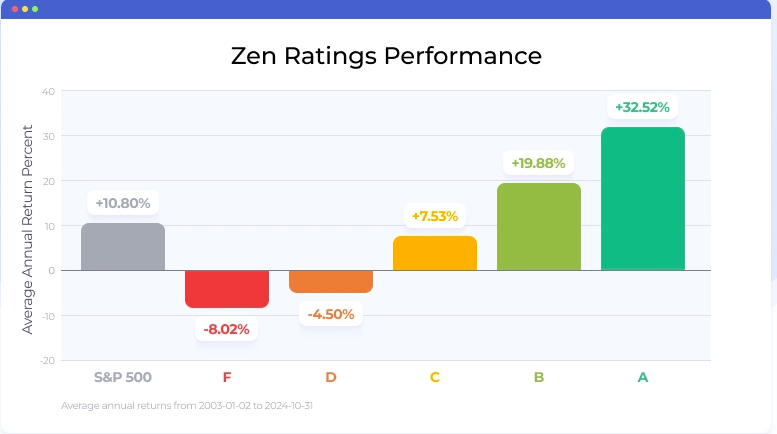20 New Reasons For Choosing AI Stock Analysis Platforms
Top 10 Things To Consider When Considering Ai And Machine Learning Models On Ai Stock Trading PlatformsIn order to get accurate information, accurate and reliable You must test the AI models and machine learning (ML). Models that have been poor-designed or exaggerated can result in inaccurate forecasts as well as financial loss. Here are 10 top tips to evaluate the AI/ML platforms of these platforms.
1. Understanding the model's purpose and the way to approach
It is crucial to determine the goal. Determine whether the model has been developed for long-term investing or short-term trading.
Algorithm transparency: See if the platform reveals the types of algorithms used (e.g. Regression, Decision Trees Neural Networks and Reinforcement Learning).
Customizability: Determine whether the model can adapt to your particular trading strategy or tolerance for risk.
2. Evaluation of Performance Metrics for Models
Accuracy Verify the model's predictive accuracy. Don't solely rely on this measure however, because it can be inaccurate.
Recall and precision: Determine the accuracy of the model to detect real positives, e.g. correctly predicted price changes.
Risk-adjusted return: Determine whether the model's forecasts will yield profitable trades after taking into account risks (e.g. Sharpe ratio, Sortino coefficient).
3. Check the model by Backtesting it
Historic performance: Use historical data to backtest the model to determine the performance it could have had in the past under market conditions.
Check the model against information that it hasn't been taught on. This will help prevent overfitting.
Scenario Analysis: Review the model's performance in different market conditions.
4. Make sure you check for overfitting
Signals that are overfitting: Search for models performing extremely well in data training, but not so well on data that is not seen.
Regularization: Determine if the platform uses regularization techniques, such as L1/L2 or dropouts in order to prevent overfitting.
Cross-validation. Make sure the platform is performing cross-validation to assess the generalizability of the model.
5. Review Feature Engineering
Relevant features - Make sure that the model uses relevant features, like price, volume or technical indicators. Also, verify sentiment data and macroeconomic factors.
Selection of features: You must ensure that the platform is selecting features that have statistical value and avoid redundant or unneeded data.
Dynamic feature updates: Find out whether the model will be able to adjust to market changes or to new features as time passes.
6. Evaluate Model Explainability
Interpretability: Ensure that the model provides clear explanations for the model's predictions (e.g., SHAP values, the importance of features).
Black-box model Beware of applications that make use of models that are too complex (e.g. deep neural networks) without describing the methods.
User-friendly insights : Determine if the platform provides actionable information in a form that traders can use and understand.
7. Examine the flexibility of your model
Market changes - Verify that the model can be adjusted to the changes in market conditions.
Examine if your platform is updating its model on a regular basis with new information. This will increase the performance.
Feedback loops. Make sure you include the feedback of users or actual results into the model to improve it.
8. Examine for Bias or Fairness.
Data bias: Make sure the training data you use is representative of the marketplace and free of biases.
Model bias: Make sure the platform monitors the model biases and minimizes them.
Fairness: Ensure that the model does not disproportionately favor or disadvantage particular stocks, sectors or trading styles.
9. Examine the Computational Effectiveness
Speed: Determine whether you are able to make predictions with the model in real-time.
Scalability Check the platform's capability to handle large sets of data and multiple users without performance degradation.
Resource usage: Examine to make sure your model is optimized for efficient computational resources (e.g. GPU/TPU utilization).
Review Transparency Accountability
Model documentation - Ensure that the platform has detailed details on the model including its design, structure the training process, its the limitations.
Third-party validation: Determine if the model was independently verified or audited by an outside person.
Error Handling: Verify whether the platform is equipped with mechanisms that detect and correct errors in models or malfunctions.
Bonus Tips
Case studies and user reviews User feedback and case studies to gauge the actual performance of the model.
Trial period: You may try the demo, trial, or a free trial to test the model's predictions and the usability.
Customer support - Make sure that the platform you choose to use is able to offer a solid support service in order to resolve problems related to model or technical issues.
These tips will help you assess the AI and machine learning algorithms used by stock prediction platforms to ensure they are transparent, reliable and in line with your goals for trading. Have a look at the most popular additional reading on ai trade for site tips including trading with ai, AI stocks, ai for investing, ai investing, AI stock trading, chatgpt copyright, AI stock trading app, ai for stock trading, ai investing platform, chatgpt copyright and more.

Top 10 Tips For Assessing The Risk Management Of AI stock Predicting/Analyzing Trading Platforms
Risk management is a crucial component of any AI trading platform for predicting or analyzing stocks, as it helps protect your capital and reduce the risk of losses. Platforms with robust risk-management tools will help you navigate volatile markets and make educated choices. Here are 10 suggestions on how to assess the risk management capabilities of the platform.
1. Examine Stop-Loss and Take Profit Features
Customizable settings: Make sure you set your take-profit or stop-loss level for a specific trade.
Find out if you can utilize trailing stops. They automatically adjust as market conditions shift to your advantage.
If the platform offers stop-loss orders that guarantee your position is closed to the specified price in volatile markets, you can be confident of a successful trade.
2. Assess Position Sizing Tools
Fixed amount. Be sure to have the option to define your positions' sizes by a fixed dollar amount.
Percentage: Determine whether you are able to determine your positions' sizes in percentages of the total value of your portfolio. This will allow you to control risk more effectively.
Risk-reward: Check if your platform allows you to define risk-rewards for each strategy or trade.
3. Look for Diversification support
Multi-assets trading: Make sure that the platform can support trading across multiple asset categories (e.g. ETFs, stocks, options, forex and more.) to diversify portfolios.
Sector allocation: Ensure that the platform is equipped with tools to monitor exposure to different sectors.
Geographic diversification: Verify if the platform allows trading in international markets to spread geographic risk.
4. Evaluation of Margin and Leverage controls
Margin requirements. Be aware of the margin requirements prior to trading.
Find out if you can set leverage limits to limit risk exposure.
Margin call: Check that the platform is providing timely notifications for margin calls. This could help avoid account closure.
5. Assessment Risk Analytics and reporting
Risk metrics: Ensure the platform offers key risk indicators (e.g. Value at Risk (VaR) Sharpe ratio drawdown, Sharpe ratio) for your portfolio.
Scenario analysis: Ensure that the platform allows you to simulate different scenarios of the market in order to evaluate the risk.
Performance reports: Make sure the platform provides you with detailed reports on performance, as well as returns that are risk adjusted.
6. Check for Real-Time Risk Monitoring
Portfolio monitoring - Ensure that the platform you choose has real-time monitoring in order to ensure your portfolio is secure.
Alerts: See if you receive real-time alerts for at risk (e.g. stop-loss triggers, breach of margins).
Risk dashboards: Check if the platform offers risk dashboards that can be customized to give you an extensive overview of your risk profile.
7. Assess Stress Testing and backtesting
Stress testing: Ensure that the platform lets you stress test your strategies or portfolio in extreme market conditions.
Backtesting: Verify that the platform supports backtesting strategies using previous data to evaluate risk and performance.
Monte Carlo simulations: Verify that the platform is using Monte Carlo simulations to model possible outcomes and assess risk.
8. Risk Management Regulations: Assess the compliance
Compliance with the regulatory requirements: Make sure the platform meets the relevant regulations for risk management in Europe as well as the U.S. (e.g. MiFID II).
Best execution: Verify that the platform follows the best execution practices. Trades are executed at the lowest price that is possible in order to reduce the chance of slippage.
Transparency - See whether the platform has disclosed risks in a clear, open and transparent manner.
9. Check for User Controlled Risk Parameters
Custom risk rules: Ensure that the platform allows you to create custom risk management guidelines (e.g. maximum daily loss, maximum size of the position).
Automated Risk Controls Determine whether the platform has the capability to automate the enforcement of risk management guidelines in accordance with predetermined parameters.
Manual overrides Check whether you are able to manually override the automated risk control in an emergency.
Study Case Studies and User Feedback
User reviews: Read user feedback and assess the effectiveness of the platform in the management of risk.
Case studies: Check for testimonials or case studies that highlight the platform's capabilities in the field of risk management.
Community forums - Search to see if the website offers a user community that is active and where traders are able to share their risk management strategies.
Bonus Tips:
Free Trial: Try out the platform's features for risk management in real-world scenarios.
Support for customers: Make sure whether the platform offers robust support in relation to issues or questions relating to risk management.
Educational resources - See whether the platform offers instructional resources and videos on risk management best practice.
Use these guidelines to evaluate the risk management capabilities of AI trading platforms that predict/analyze the prices of stocks. Choose a platform with an excellent quality of risk-management and you can reduce your losses. For trading success and to navigate volatile markets, robust risk management tools are essential. View the recommended AI stock price prediction hints for blog examples including AI stock investing, invest ai, best stock prediction website, how to use ai for stock trading, best AI stock prediction, ai investment tools, ai investment tools, ai in stock market, chart ai trading, can ai predict stock market and more.
